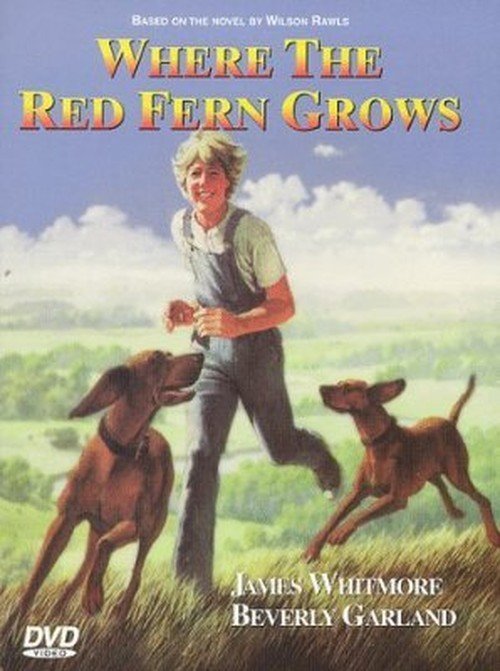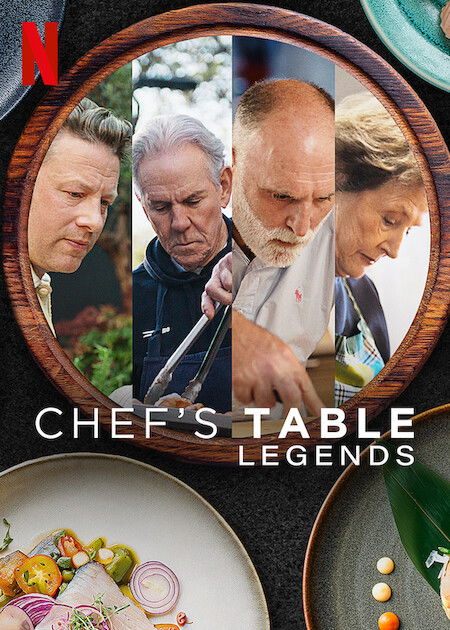“Promoting the Joys of Healthy Cooking”

| None | Light | Moderate | Heavy | |
|---|---|---|---|---|
| Language | ||||
| Violence | ||||
| Sex | ||||
| Nudity |
What You Need To Know:
CHEF’S TABLE: LEGENDS: “Jamie Oliver” is the first episode in a documentary series about famous chefs. The first episode follows popular British chef, Jamie Oliver, from a young age. Jamie’s dyslexic, so he had trouble in school. However, he enjoyed working at his father’s restaurant. An accidental interview with the BBC got him his own cooking show and his own cookbook. Financial success and fame followed, and Jamie decided to use his fame to help children get excited about cooking and nutrition.
Episode 1 of CHEF’S TABLE: LEGENDS is a bit all over the place, especially in the visuals. This is because the program uses use old footage to revisit parts of Jamie’s life. Everything else is very entertaining, with excellent production values. Episode 1 has strong moral elements. For example, Jamie’s main goal is helping people, especially young people, enjoy cooking and eating nutritional but delicious food. However, he often talks about what he wants to do and where he’s going, so he’s a little self-centered. Also, Episode 1 of CHEF’S TABLE: LEGENDS has five “f” words. So, MOVIEGUDIE® advises extreme caution.
Content:
(BB, C, Ro, LL, V, A, D, M):
Strong moral worldview reflecting biblical values, including wanting to help vulnerable young people having trouble in school and helping future generations learn to eat more healthy, with some light Christian content where famous chef says cooking “saved him” and made him desire to help other people, especially the vulnerable and future generations, mixed with some light Romantic values about dealing with emotional issues;
11 obscenities (including five “f” words), one light profanity, a few bleeped obscenities in a recorded TV program, the word dunce is mentioned, chef says he “made the Bible for school food,” and there’s talk about a TV series called THE NAKED CHEF, a double entendre, because the program featured a young chef trying to “strip” cooking to its “bare” essentials to show people how to cook delicious meals without using a bunch of pots and pans;
No violence against humans, but there are examples of people cutting, chopping, slapping, and smashing food/ingredients (such as dough, meat, veggies, etc.);
No sex scenes or sexual immorality, but there are a few instances of a couple (dating at the time, but would eventually marry) kissing, hugging and holding hands, plus instances of a man with his arm around his friend (a man) and the man dances with multiple women during a party montage;
No nudity;
Comments about wanting to run/work at a pub, one instance of cooking with white wine, a few instances of people holding and drinking alcoholic beverages such as champagne, but viewers don’t see much drinking;
An instance of smoking tobacco; and,
One example of reporters “attacking” Jamie Oliver by writing critical articles about him, and documentary is vague about why the featured chef had to sell all his restaurants.
More Detail:
CHEF’S TABLE: LEGENDS follows legends of the cooking industry, diving deep into their background and the process of how they got to where they are. The guest for the first outing is none other than Jamie Oliver. He started as a TV chef in his show, “Naked Chef.” That show was a hit, launching him into fame. From there, he used his fame to help give back and teach young people and public schools about good healthy food and cooking said food.
The episode starts at the beginning, when Jamie Oliver was a child. Like many other kids, Jamie didn’t like school. However, he didn’t have a disliking for education, he just struggled with class work. He struggled so hard in fact that he was even put into special needs classes and that did not help. However, while struggling at school, he would go home and work in his father’s pub. It was there that, with his father’s approval, he found his love for cooking.
Working there planted the seeds of what would become his career: cheap, quality food. To combat the classic but expensive dish of beef wellington, they developed a cheaper substitute, Trevor’s Chicken, named after his father. It was mushroom-stuffed chicken, wrapped in pastry.
One day, while covering a kitchen shift at a restaurant, a BBC crew was filming the happenings in the kitchen. The crew followed Jamie around as he cooked multiple dishes. After the program aired, producers called Jamie, asking him to do a cooking show. Jamie wanted to show people how to cook simpler, but still delicious and healthy, nutritional dishes. He also wanted to “strip” cooking down to its “bare” essentials, and that why they called it “The Naked Chef.” Before the program started airing, however, Jamie published a cookbook. Since writing was hard for him, he had to dictate the recipes into a recording. Both the cookbook and the program were a hit, and, at age 24, Jamie found himself to be a millionaire.
Once he got fame, there was backlash. Reporters started writing articles criticizing him. This criticism led to Jamie’s next move, opening a restaurant. However, this restaurant wouldn’t be a normal restaurant. This was a restaurant that taught teenagers how to cook and let them run the kitchen. These teenagers were exactly like Jamie, people who were struggling in school and didn’t have many options. He would be there to help the young teenagers learn and get their footing under them. The restaurant was named “Fifteen,” because it had 15 young chefs.
After that project, he moved into trying to improve school lunches for Britain’s schoolchildren. He would go work at a school for a long time, trying to get the children to eat healthier. However, the foods were so used to eating junk food that they didn’t like the school lunches and dinners Jamie and his team were making. So, the much of the food ended up in the trash bin. So, Jamie started working with the students in the schools, teaching them how to make healthy dishes and showing them what he and his team were putting into the food. Gradually, less and less of the food was ending up in the trash.
However, now Jamie had to convince the government to fund more healthy school kitchens and get public support for more nutritional food. Eventually, Jamie was able to get a meeting with Prime Minister Tony Blair to secure funding for the new program.
From there, Jamie really hit his stride. He opened 46 restaurants and traveled the world making program about food, healthy eating and teaching the public about cooking and nutrition. He was incredibly successful, winning many awards along the way. However, it wouldn’t last.
Unfortunately, Jamie fell on some hard times. He had to close many restaurants, including his pride and joy, Fifteen. At this point, he has nothing left to do but reflect. He reflects on his businesses and his life’s mission. Ultimately, He says, helping people, specifically the next generation, find the joy in cooking is his pride and joy.
Episode one of CHEF’S TABLE: LEGENDS is incredibly well made, yet somewhat deceptive. Usually, TV cooking programs involve recipes and learning how to make said recipes. However, this show does none of that. This is a documentary purely about Jamie Oliver and his past. The visuals vary, as they use footage from older shows. The editing is jarring, specifically in the intro. They mash songs together and cut short the beat. However, this only happens in the intro. The rest of the episode is very well put together.
Thematically, CHEF’S TABLE: LEGENDS: “Jamie Oliver” is a mixed bag. It has very positive elements. It has strong moral elements, with most of the episode being about helping children and not only helping them eat better. It follows Jamie as he teaches easy and healthy cooking, trying to help future generations find joy in cooking and in nutrition. However, Jamie Oliver is very much driven by his wants and desires. While helping future generations is his focus, he’s still following his own wants and desires. This reflects an element of Romanticism. Also, the episode itself isn’t political per se, but it does discuss trying to get the British government to finance school lunch and dinner programs. Former Prime Minister Tony Blair makes two or three appearances, and it’s clear he’s very supportive of Jamie Oliver’s vision. In addition, the program is a little vague about why Jamie Oliver had to sell his restaurants. A simple search online reveals that, first, some of the restaurants began having issues regarding the cleanliness of a few outlets. Also, as Jamie became more of a worldwide celebrity, he started spending less time overseeing all his restaurants. Consequently, people stopped coming, and he had to sell. Finally, Episode 1 of CHEF’S TABLE: LEGENDS has some strong foul language, including five “f” words. So, MOVIEGUIDE® advises extreme caution.


 - Content:
- Content: 
